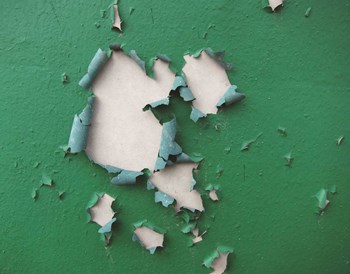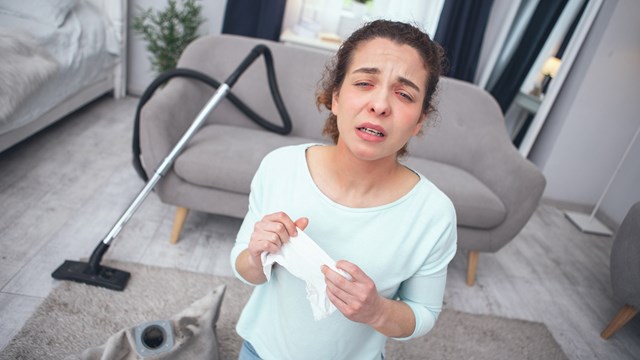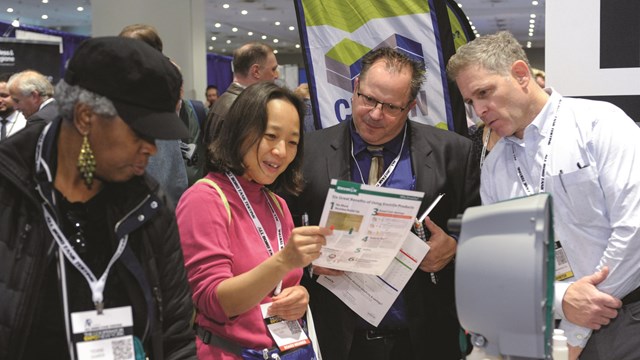
In South Florida, buying a co-op or a condo goes something like this: Your realtor takes you to see your dream home. You put in an offer—along with a bunch of other people. After a few nerve-wracking offer/counter-offers, yours is finally accepted. You may or may not choose to have your home inspected. While home inspections are very common in the suburbs, they aren’t as typical in condominium units.
Then you move into your new place and you and your family live happily ever after . . . until you find out that your dream home is filled with invisible hazards that can make you and your children very sick.
While some hazards—things like crumbling masonry, cracked sidewalks and deteriorating windows—are visible even to an untrained eye, other dangers are not so obvious. A few are entirely invisible to the eye and they have no smell or taste, but they are still deadly.
Substances like lead, carbon monoxide, mold, radon and asbestos and formaldehyde can permeate a building or unit without anyone knowing until it’s too late, and the result can be tragic. Fortunately, these hidden dangers in South Florida condo buildings can be discovered, remedied and avoided with a little extra legwork.
Hazards
According to the Environmental Protection Agency (EPA) lead paint is a common hazard that eventually led to the Lead-Based Paint Disclosure rule which requires the disclosure of known lead paint and lead-based paint hazards by persons selling or leasing a pre-1978 house. The rule states that real estate agents, landlords, property managers and sellers to disclose know lead-based paint to potential purchasers and renters.
“The most recent Renovation Repair Painting (RRP) rules have been in effect since 2010 but nobody is paying attention to it,” says Philip Garcia, a lead safe certified contractor and president of Phil’s Handy Service Inc. in Tampa. “I walk into jobs every day, and the contractors have already been there, and no one seems to be telling them about the danger they are about to cause in people’s homes. Lead paint is harmless until you disturb it—that means cutting it, sanding it or tearing it out in demolition. If it’s been there for years and years and it hasn’t been disturbed, it’s not causing any problems. When the fine dust gets into the air and it’s ingested by humans that’s where it poses the hazard of lead poisoning.”
The RRP rule protects homeowners and tenants from hazardous lead dust that can be left behind after painting, common renovation repair like sanding or replacing windows. It requires that contractors and subcontractors be properly trained and certified, and use lead-safe practices to ensure that lead dust is minimized.
“It’s not the licensed contractor that concerns me; it’s the people that run around with no licensing. I see that a lot, it’s all over the place,” says Garcia. “Those are the guys that are going to do the most damage in the end. I couldn’t sleep at night if I knew I was going to make someone sick. It’s extremely important to have a licensed contractor.”
“Using lead-safe work practices is good business and it’s the law,” according to EPA spokesperson Cynthia Giles in a 2013 press release. “EPA is taking action to enforce lead rules to protect people from exposure to lead and to ensure a level playing field for contractors that follow the rules.”
According to industry experts lead-based paint was widely used across Florida in residential properties for two centuries until it was banned in 1978. So if your home was built before 1978 there is a high likelihood that it contains lead paint.
“With my experience, what I’m finding is the homes in Panacea, Hyde Park, Davis Island, and Seminole Heights are the four areas where I’m finding lead paint to be the most prevalent,” says Garcia. “The ones that I worked on from the 1940s seem to have a high level of lead-based paint in the trim work and around the doors and windows. I don’t know if it had something to do with World War II, but we are really close to the shipyards—maybe people bought it home with them.”
“Children and pregnant women are the ones who are hurt the most by [lead poisoning]—but that’s not to say that older people can’t be hurt by it,” says Mary Kinberg, a former RRP instructor at Seagull Environmental Management Company Inc. in Fort Lauderdale. “Lead poisoning can cause brain damage. Even if it’s just lead chips, the chips can fall into a rug, and kids can put the chips into their hands, or their mouths. Dust is a problem too; maybe someone is scraping the paint off the wall and the dust goes all over. That's a real problem, and people don’t realize that.”
Have Testing Done
The only way to be sure if paint contains lead is to have it tested by a qualified professional. Home test kits are not reliable and can’t tell if the paint poses a risk.
Some methods of removing lead- based paint can actually do more harm than good.
Things such as scraping or power sanding that can create large amounts of lead dust.
According to the EPA, the most common method for testing for lead-based paint is to have a Certified lead-based paint inspector or lead-based paint Risk Assessor conduct a surface-by-surface investigation for lead-based paint by collecting paint chips for laboratory analysis or by testing painted surfaces with a machine called an X-Ray Fluorescence Analyzer (XRF), which measures the amount of lead in paint. Another option is to collect paint chips for laboratory analysis.
“The problem with lead is that it’s invisible,” says Jim Stump, Seagull’s chief executive officer. “So there’s no sign that a building has been contaminated. Another problem is when contractors go to do a renovation they expose this stuff [lead] and the stuff they are exposing is invisible. An easy way to understand what lead is and what it does is that the human body can’t tell the difference between lead and calcium.
“So if it goes into a child’s blood and it mistakenly gets lead instead of calcium that area is destroyed for life. It will never come back again. Children who have a high percentage of lead in their blood do not perform well in schools. Even today if a child drops out of high school, there is something like an 80 percent chance they have an elevated amount of lead in their blood,” he says.
According to experts lead can also be found in drinking water because lead pipes were common prior to the 1970s.
Depending on the pipes themselves and the corrosiveness of the water—if it’s soft water—professionals would test the chemical parameters of the water. If it’s corrosive, it could lead to lead being released into the water. Also, if the water pipes aren’t properly grounded, it can accentuate the corrosion of the pipes, which could lead to lead in the water.
Problems with Mold
Lead is not the only problem lurking within South Florida’s walls and pipes. Due to South Florida’s humid, tropical climate and moist environment, mold is common in many homes across Florida, especially South Florida.
That’s because mold comes from water, and water doesn’t care if it’s entering a condo, a co-op, an apartment or a house.
“The most major reason we have a huge mold industry in Florida is hurricanes,” says Stump. “Mold is an organism that requires food like any other organism and its food is organic materials, meaning everything that was once alive. So wood in your house, certain components in drywall and paint sometimes have oil in it, which is organic, and mold tends to settle on those types of items.”
According to experts, if you take care of the mold immediately, it’s not going to be a big deal, and it won’t be an expensive situation. It’s also something that anyone can take care of without calling in a professional—as long as they catch the mold when it first enters their home. If you have mold contamination, simply sanitize the area using a diluted non-scented bleach solution.
“One of the biggest problems people have down here is that a lot of people have two homes, one in the north and one in the south,” says Stump. “Typically in the summertime they would close up their Florida residence and turn the air conditioning off, which allows the humidity to thrive and that’s the last thing mold needs. Mold does not proliferate in temperatures of air-conditioned units so when you turn the air conditioner off it adds the warmth that it likes to have. Mold needs a fair amount of warmth and it needs moisture and it needs food—and in the summertime, when you lock up a condominium and you walk away for three months that’s exactly what you’re giving it.”
Lead, mold and other toxins are a complicated, scary issue for homeowners, boards and renters. But there are many resources available. Boards, managers and residents can check out www.EPA.gov/iaq to get detailed information about many different indoor air issues.
Christy Smith-Sloman is a staff writer at The South Florida Cooperator. Freelance writer Danielle Braff contributed to this article.






Leave a Comment